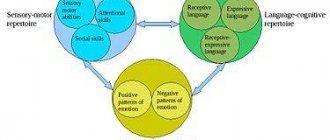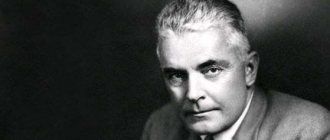What do you think is the essence of a person? We think you will agree that personality is most clearly manifested in actions and actions. All people start and spend their day differently, communicate with others differently, do work and spend leisure time differently, and react differently to life circumstances and the actions of other people. So, everything that relates to the field of human behavior has been the subject of study for decades in various scientific directions, one of the most popular of which not so long ago was behaviorism.
Behaviorism: briefly about the most important things
So what is behaviorism? The concept of "behaviorism" comes from the English word "behavior", meaning "behavior", and is a systematic approach to the study of the behavior of people (and, of course, other animals). It is based on the assumption that human behavior consists of reflexes and reactions to any stimuli in the surrounding world, as well as the consequences of a person’s personal history.
These consequences are reinforcement and punishment, and they act together with the motivational state of a person at the current moment in time and the incentives that control his behavior. Although behaviorists recognized the important role of heredity in human behavior, their main interest was in environmental factors.
Representatives of behaviorism completely denied consciousness as an independent phenomenon. For them, it was nothing more than behavioral reactions to external stimuli. They reduced thoughts and feelings to motor reflexes that are developed in a person as he gains life experience.
The ideas of behaviorism, which did not arise against the backdrop of a critical attitude towards the main method of studying the human psyche at the end of the 19th century - introspection, turned out to be revolutionary at the time of their appearance (the first half of the 20th century) and determined the shape of American psychology for many years. All scientific ideas about the psyche were transformed overnight, and scientists began to study not consciousness, but human behavior.
Distrust of introspection was due to the lack of objective measurements and the diversity of the data obtained. Behavior became an objective phenomenon of the psyche for psychological behaviorism.
The philosophical basis for the new direction was the ideas of the English educator and philosopher John Locke, who insisted that man is born as a “blank slate,” as well as the ideas of the English philosopher Thomas Hobbes, who denied a thinking substance in man as such.
However, the founder of behaviorism is considered to be the American psychologist John Watson, who proposed a scheme for explaining the behavior of any animal on our planet, including humans. This scheme looked quite simple: a stimulus causes a reaction. And given that both of these concepts can be measured, Watson's views quickly found supporters.
According to Watson, if the right approach is applied to the study of behavior, it will be possible to completely predict, shape and even manage this behavior by producing changes in the surrounding reality. And the mechanism of such influence itself was based on learning through classical conditioning, studied in detail by the Russian and Soviet scientist Ivan Petrovich Pavlov.
We should also say a few words about Pavlov’s theory, but first let me invite you to watch a video about behaviorism and its founder, John Watson. Considering that in the article we briefly consider behaviorism, this video will serve as an excellent addition to our material.
Classical behaviorism by J. Watson
John Watson - American psychologist, founder of behaviorism. He tried to make psychology a natural science that would use objective methods.
Watson paid great attention to classical learning , in which the body associates different stimuli (the sound of a bell is a conditioned stimulus, and salivation in a dog in response to the sound of this bell is a conditioned reflex). This type of learning is focused on involuntary, automatic actions.
The body of both humans and animals adapts to its environment through an innate and acquired set of acts, i.e. behavior. Watson interpreted all mental activity as behavior. He considered it as a set of reactions of the body to stimuli, i.e. behavior according to the “stimulus-response” principle (S → R). J. Watson believed that by choosing the right stimulus, it is possible to form the necessary skills and qualities in a person or animal.
Watson's work and the basic ideas of behaviorism were greatly influenced by the discovery by Russian physiologist I.P. Pavlov of classical conditioned reflexes. Largely influenced by Pavlov's work, although Pavlov himself believed that they had misunderstood him, Watson stated that observations of behavior could be described in the form of stimuli (S) and responses (R).
To prove the correctness of the behavioral theory, John Watson and Rosalie Rayner conducted an experiment that became known as “little Albert” .
Watson and Rayner chose for their experiments an 11-month-old infant, “Albert B.”, who was a completely normally developed child. First, the experimenters tested little Albert's reactions by showing him a white rat, masks, burning newspaper, and cotton yarn. None of this revealed any fear in the boy.
They then proceeded to create a fear response. At the same time that Albert was given a white rat to play with, the experimenter hit a steel strip with a hammer so that the baby could not see the hammer and the strip. The loud sound scared Albert. Thus, the child began to become afraid of the rat itself (without being hit). At this stage, the conditioned fear reflex towards the rat was established in little Albert.
Five days later, Albert was back with the experimenters. They checked his reaction: ordinary toys did not cause a negative reaction. The rat still scared the baby. The experimenters checked whether there was a transfer of the fear reaction to other animals and similar objects. It turned out that the child is really afraid of some animals and objects that are not related to the rat (for example, a rabbit (strongly), a dog (weakly), a fur coat, etc.).
Contributions of Pavlov and Thorndike
Behaviorism in psychology is based on the scientific research of academician Ivan Petrovich Pavlov, known to most (at least from school). In the process of his research, he established that unconditioned reflexes determine the corresponding reactive behavior in animals. But through external influence it is quite possible to develop conditioned - acquired reflexes in them, which means that new behavioral models will be formed.
Academician Pavlov, as you remember, conducted experiments on animals, and John Watson went further and began experimenting on people. Working with infants, he was able to identify three fundamental instinctual responses in them. These reactions were love, anger and fear.
As a result, Watson came to the conclusion that any other responses in behavior are layered on top of the first three. But, unfortunately, the mechanism for the formation of complex forms of behavior was not revealed to him. In addition, the experiments conducted by the scientist were perceived by society as very controversial from a moral point of view, and were criticized.
But after Watson, a considerable number of people appeared who made a significant contribution to the development of the ideas of behaviorism. One of the most prominent representatives is the American psychologist and teacher Edward Thorndike, who introduced the term “operant behavior” into psychology, which is formed on the basis of trial and error.
Thomas Hobbes stated that the nature of intelligence consists of associative reactions. Another philosopher, Herbert Spencer, pointed out that mental development allows animals to adapt to environmental conditions. But only Thorndike was able to establish that the essence of intelligence can be revealed without resorting to consciousness.
In contrast to Watson, Thorndike considered the starting point not to be an external impulse that forces an individual to move, but a problematic situation that requires adapting to environmental conditions and building behavior accordingly.
According to Thorndike’s views, the concept of “stimulus-response” is characterized by the following features:
- starting point (the problem situation serves as it);
- the body’s opposition to a problematic situation (the body acts as a single whole);
- the body's search for a suitable behavior model;
- teaching the body new techniques (through “exercises”).
The development of behaviorism owes much to Thorndike's theory. But still, in his work, this scientist operated with concepts that were subsequently excluded from behaviorism. While Thorndike pointed to the formation of the body's behavior due to a feeling of discomfort or a feeling of pleasure and introduced the “law of readiness”, changing response impulses, representatives of “pure” behaviorism did not allow the specialist to take into account the internal sensations and physiological characteristics of the subject being studied.
One way or another, thanks to the influence of the mentioned scientists, the basic ideas of behaviorism, as well as its various directions, were formed. We'll talk about directions a little later, but for now let's briefly summarize what has been said.
E. Thorndike's research within the framework of behaviorism
Edward Thorndike is an outstanding American psychologist, founder of learning theory, author of such works as “Animal Intelligence”, “Fundamentals of Learning”, “Educational Psychology”, etc. Thorndike did not consider himself a behaviorist, although his laws and research often characterize him as a supporter of this direction .
While still at Harvard University, under the supervision of his mentor W. James, E. Thorndike began experiments on animals. He began teaching the chickens how to navigate a maze, and this took place in the basement of James's house, because... the university did not have space for a laboratory. In fact, it was the world's first experimental laboratory in animal psychology.
In his experiments in Columbia, he studied the patterns of adaptation of the body to unusual conditions, which it cannot cope with when it has only a set of behavioral programs. For research, he invented special “problem boxes ,” which are experimental devices of varying degrees of complexity. An animal placed in such a box had to, overcoming various obstacles, independently find a way out and solve the problem.
Experiments were carried out mainly on cats, but there were also boxes for dogs and monkeys. An animal placed in a box could come out of it and receive a treat only by activating a special device - by pressing a spring, pulling a loop, etc. The research results were displayed on graphs, which he called “learning curves ” . Thus, the purpose of his research was to study the motor reactions of animals.
As a result of the experiment, it turned out that the behavior of the animals was the same. They made many random movements - rushing in different directions, scratching the box, biting it, etc., until one of the movements accidentally turned out to be successful. With subsequent trials, the number of useless movements decreased, the animal needed less and less time to find a way out, until it began to act without error. This type of learning came to be called “trial and error” learning .
Thorndike next focused on studying the dependence of the connections that underlie learning on factors such as reward and punishment. Based on the materials received, he derived the basic laws of learning .
1. Law of repetition (exercises) - the more often the connection between stimulus and response is repeated, the faster it is consolidated and the stronger it is. 2. The law of effect - of several reactions to the same situation, other things being equal, those that cause a feeling of satisfaction are more firmly associated with the situation. (Connections in consciousness are established more successfully if the response to the stimulus is accompanied by encouragement). 3. The law of readiness - the formation of new connections depends on the state of the subject. 4. The law of associative shift - if, with the simultaneous appearance of two stimuli, one of them causes a positive reaction, then the other acquires the ability to cause the same reaction. That is, a neutral stimulus, associated by association with a significant one, also begins to evoke the desired behavior.
Thorndike formulated the concept of "spreading effect". This concept implies a willingness to assimilate information from areas adjacent to those areas that are already familiar. He also noted that learning one type of activity can even prevent mastery of another ( " proactive inhibition" ), and newly learned material can sometimes destroy something already learned ( "retroactive inhibition" ).
These two types of inhibition are associated with the phenomenon of memory. Forgetting some material is associated not only with the passage of time, but also with the influence of other types of activity.
Basic provisions and features of behaviorism
Considering behaviorism in psychology as a fundamental scientific direction, we can highlight a whole complex of its basic provisions. Let's present them in abstract form (to understand this topic better, of course, it is worth reading thematic books - the works of Thorndike, Watson and other authors):
- the subject of study of behaviorism is the behavior and behavioral reactions of humans and other animals;
- behavior and behavioral reactions can be studied through the observation method;
- all mental and physiological aspects of human existence are determined by behavior;
- human and animal behavior is a set of motor reactions to stimuli (external stimuli);
- if you know the nature of the stimulus, you can predict the response;
- predicting the actions of an individual is the main task of behaviorism;
- the behavior of people and animals can be controlled and shaped;
- all reactions of an individual are either inherited (unconditioned reflexes) or acquired (conditioned reflexes);
- human behavior is the result of learning (due to repeated repetition, successful reactions are consolidated in memory and become automatic and reproducible);
- skills are formed through the development of conditioned reflexes;
- thinking and speaking are skills;
- memory is a mechanism for retaining acquired skills;
- mental reactions develop throughout life;
- the development of mental reactions is influenced by living conditions, environment, etc.;
- emotions are reactions to positive and negative stimuli from the outside.
It is not difficult to understand why the ideas of behaviorism have had such an impact on the public and the scientific community. And at first there was genuine enthusiasm around this direction. But any direction in science has both advantages and disadvantages. And this is what we have in the case of behaviorism:
- For the era in which behaviorism appeared, it was a fairly progressive approach to the study of behavior and behavioral reactions. Taking into account the fact that previously scientists studied only human consciousness, separated from objective reality, this is not at all surprising. But representatives of behaviorism took a one-sided approach to expanding the understanding of the subject of psychology, because they did not take into account human consciousness at all.
- Behaviorists raised the issue of studying behavior very sharply, but they considered the behavior of an individual (not only humans, but also other animals) only in external manifestations. Just like consciousness, they completely ignored mental and physiological processes that were not amenable to observation.
- The theory of behaviorism indicated that the researcher can control the behavior of the object based on his needs and objectives. But the approach to studying the subject turned out to be mechanical, and therefore the behavior of the individual was reduced to a complex of the simplest reactions. The active, active essence of man had no meaning for scientists.
- The basis for psychological research for behaviorists was the method of laboratory experiment. They also began to practice experiments on living beings (including people). But at the same time, researchers did not see any particular differences between the behavior of people, animals and birds.
- Establishing the mechanism for developing skills in humans, representatives of behaviorism discarded its most serious components: motivation and the mental mode of action that served as the basis for its implementation. In addition, they completely ignored the social factor.
The presence of such significant shortcomings from a modern point of view has led to the fact that over time, the once most progressive scientific direction ceased to withstand any criticism. However, we are not summing up the results yet, because... To complete the picture, it makes sense to briefly consider the trends that emerged on the basis of classical behaviorist views, as well as their most prominent representatives.
The essence of Theory X
Most employees avoid work in every possible way due to an innate dislike of it. They are not ambitious, do not want to take responsibility for getting the job done, and prefer to be managed. For such employees, safety is the highest value - it is this that motivates them to work in order to maintain their stable job.
Finished works on a similar topic
Course work The direction of behaviorism in management and its representatives 470 ₽ Essay The direction of behaviorism in management and its representatives 240 ₽ Test work The direction of behaviorism in management and its representatives 230 ₽
Receive completed work or specialist advice on your educational project Find out the cost
According to Theory X, management must be tight to ensure that work gets done. The main goal of management is coercion of labor. As part of this work organization, management must threaten employees with various sanctions to ensure the decent quality of their work necessary to achieve organizational goals. Managers who act in accordance with Theory X are called autocratic managers.
Directions of behaviorism and their representatives
The leader of the behaviorist movement was John Watson, but the ideas of behaviorism were actively supported by other scientists. Among the most prominent is William Hunter, who in 1914 created the so-called delayed scheme for studying behavioral responses.
His experiments with monkeys brought him fame: the scientist showed the animal two boxes, one of which contained a banana. After that, he closed the drawers with a screen, and after a few seconds he removed it. The monkey immediately found the banana, and this became proof that animals have both an immediate (immediate) reaction and a delayed one.
Another researcher, Karl Lashley, decided to go further. Through experiments, he helped an animal develop a skill, after which he removed one or another part of its brain, trying to understand whether the developed reflex depended on the removed part. And I watched as certain functions were taken over by another part.
The ideas of Burres Frederick Skinner are also worthy of attention. Like the ideas of previous representatives, they were confirmed experimentally, and the research method was functional analysis. It was Skinner who deeply shared the idea of studying, predicting and controlling behavior through controlling the environment.
However, the list of outstanding behaviorists is far from exhausted by these three scientists. Here is just a small list of well-known representatives of this trend: D. M. Bayer, A. Bandura, S. Hayes, S. Bijou, V. Bekhterev, R. Epstein, K. Hull, D. Levy, F. Keller, N. Miller , W. Baum, C. Osgood, K. Spence, J. Fresco, M. Wolfe and others.
Most researchers propagated the ideas of John Watson's behaviorism, but still their efforts to bring consciousness to a single denominator - a set of standard behavioral reactions - were not crowned with success. Behaviorism needed to expand the understanding of psychology, and required the inclusion of new concepts, such as motive.
This led to the emergence of new trends in behaviorism in the second half of the 20th century. One of these was cognitive behaviorism, founded by the American psychologist Edward Chase Tolman. Tolman suggested not limiting ourselves to the concept of “stimulus-response” when studying mental processes, but also using the intermediate phase between these two events. This phase is cognitive representation.
This is how a new scheme emerged that explains the essence of human behavior: stimulus – cognitive activity – reaction. The middle element includes gestalt signs, consisting of cognitive maps - images of the studied area stored in the mind, possible expectations and some other elements.
Tolman supported his arguments with the results of experiments. For example, animals needed to find food in a maze, and they always found it, moving along different paths, and it did not matter which path they were initially accustomed to. Here we can say that the purpose of action is much more important than the behavioral model. By the way, for this reason Tolman gave his system the name “target behaviorism.”
The next direction was social behaviorism. Its supporters believed that when determining the incentives that influence an individual’s behavior, it is necessary to take into account his individual characteristics and social experience. Perhaps, the Canadian psychologist Albert Bandura stood out more than others here. He conducted experiments with children: they were divided into three groups and shown a film of a boy beating a rag doll.
For each group of children there was a different ending: a positive attitude towards beating the doll, punishment for beating the doll and indifference to this process. After this, the children were brought into a room with the same doll and watched what they would do with it.
The children, who saw in the film that beating a doll was punishable, did not touch it. And children from the remaining two groups showed aggression towards the doll. This served as proof that a person falls under the influence of the society that surrounds him, i.e. the social factor matters.
And finally, the third direction of behaviorism is neobehaviorism, which has become an alternative to classical behaviorism, which is unable to provide a holistic explanation of the behavior of people and animals. Key representatives of neobehaviorism are Burres Frederick Skinner and Clark Leonard Hull.
Neo-behaviourists also expanded the stimulus-response model by introducing some intermediate variables, each of which influences the process of formation of skills and habits, i.e. speeds up reinforcement, slows it down, or prevents it. Subsequently, this direction lost its position, giving way to the cognitive psychological approach. So this milestone in the history of behaviorism can be considered the beginning of its decline. They were replaced by new directions, concepts and theories that turned out to be more suitable for the realities of our time and allow a more objective, adequate and complete interpretation of human behavior, actions and deeds. Moreover, even today, some ideas and provisions of behaviorism are actively used in practical psychology and psychotherapy.
B. Skinner's research within the framework of behaviorism
Burress Skinner is an American psychologist, writer, successor of the ideas of J. Watson, who developed the theory of operant conditioning .
He believed that the human body is a “black box.” Everything that fills this box (emotions, motives, drives) cannot be objectively measured, so they should be excluded from the sphere of empirical observation. But behavior can be objectively measured, in fact, this is what Skinner did.
He did not accept the idea of a personality that directs or stimulates behavior. Skinner believed that behavior is generated not by forces that are inside a person (for example, traits, needs, thoughts, feelings), but by forces that lie outside a person. This means that human behavior is regulated not from the inside, but from the outside (by the environment). The study of personality according to Skinner is the discovery of the peculiar nature of the relationship between the behavior of an organism and the results of this behavior, which subsequently reinforce it. This approach focuses on predicting and controlling observed behavior.
B. Skinner, like J. Watson, was interested in such a phenomenon as learning. He even developed the concept of operant conditioning, which was based on the law of effect, which was discovered by E. Thorndike.
Operant conditioning is a learning method that involves a system of rewards and punishments to increase or stop a particular type of behavior. In this case, the body associates its behavior with the subsequent result. Such learning is aimed at reinforcing behavior controlled by the individual.
For example, a person is trying to teach a dog to follow a command. When the dog successfully copes (i.e. follows the command), it receives encouragement (praise, treat). When a dog fails to complete a task, it does not receive reinforcement. As a result, the dog establishes a connection between a certain behavior and the opportunity to receive a reward. In a similar way, you can wean your dog, for example, from doing “its business” on the carpet. You just have to use a punishment system (for example, scold the dog). It turns out to be a kind of “carrot and stick” method. On this occasion, I advise you to read the most interesting book by Karen Pryor , which is called “Don’t growl at the dog! A book about training people, animals and yourself."
Skinner conducted experiments on hungry animals (rats, pigeons), which he placed in a box, which was called the “Skinner box”. The box was empty, there was only a protruding lever inside, under which stood a plate for food. Left alone in the box, the rat moves around and explores it. At some point, the rat discovers a lever and presses it. After establishing the background level (the frequency with which the rat initially presses the lever), the experimenter triggers a food cassette located outside the box. When the rat presses the lever, a small ball of food falls into the plate. The rat eats it and soon presses the lever again. Food reinforces pressing the lever, and the frequency of pressing increases. If the food cassette is disconnected so that pressing the lever no longer delivers food, the frequency of pressing will decrease.
Thus, Skinner noticed that an operantly conditioned response, when not reinforced, fades in exactly the same way as a classically conditioned response. The researcher can establish a differentiation criterion by presenting food only when the rat presses a lever while the light is on, thereby conditioning the rat through selective reinforcement. Light here serves as a stimulus that controls the reaction.
Skinner also adds provisions for two types of behavior: respondent and operant behavior. Response behavior is a characteristic response evoked by a known stimulus; the stimulus, in this case, always precedes the reaction. Examples include constriction or dilation of the pupil in response to light stimulation, jerking of the knee when hitting the patellar tendon with a hammer, and shivering when cold. Operant behavior is a voluntary learned response for which there is no recognizable stimulus. Evoked by operant conditioning, this behavior is determined by the events that follow the response. Those. behavior is followed by a consequence, and the nature of that consequence changes the organism's tendency to repeat that behavior in the future. For example, roller skating, playing the guitar, and writing one's name are operant response patterns (or operants) controlled by the outcomes that follow the corresponding behavior.










